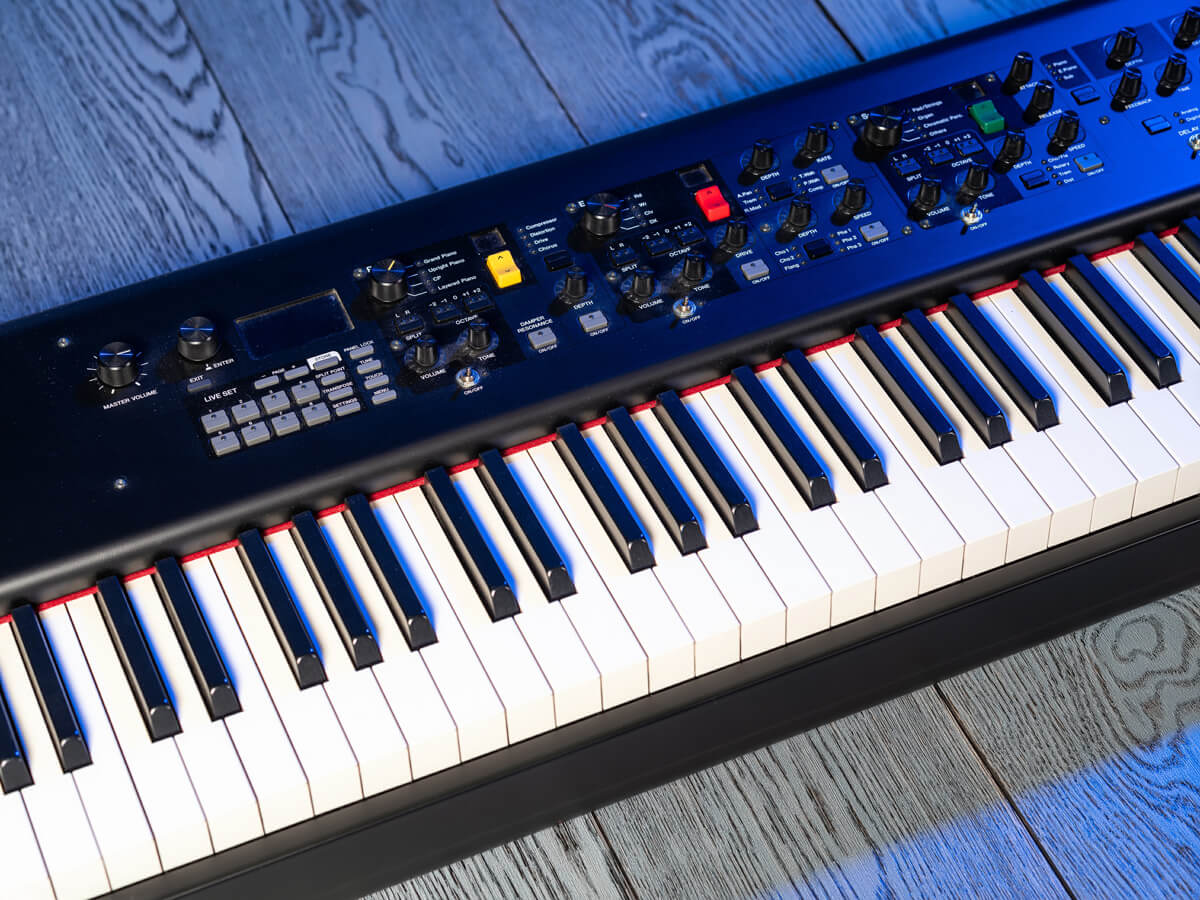Contents
Considering the diversity of tastes, it’s no surprise that the piano community is at odds about semi-weighted vs. weighted keys. At the moment, people who play traditional pianos believe that for optimal experience, the use of weighted keys is a must. Meanwhile, a lot of hobbyists claim that everyone can enjoy pianos even if they use semi-weighted keys. If you also have a hard time making up your mind once it comes to the keys, read till the end.
Breakdown
Whenever you press a key on pianos with weighted keys, you can literally feel the weight of the key pushing back at you. That is always the case for acoustic keyboards as they produce sounds using hammers and levels. As you press a key, you lift the hammer connected to the key. The sense of heaviness gives the pianist a certain feel which explains why many people don’t like pianos with semi-weighted keys.
Eventually, advances in technologies created another type of piano that requires no weight at all – digital pianos. In fact, the first synthesizers and organs had absolutely no weight in them since they used springs to make the keys pop back up. Still, there was a rising demand for electronic keyboards that would reflect the actions of acoustic pianos. Thus, digital piano manufacturers put extra counterweights in the keys to imitate the feeling of playing an acoustic piano.
While digital pianos still have springs in them, the added weight sometimes comes close to that of a fully-fledged acoustic piano. Over the years, various types of weighted digital pianos were brought to the market and among their number is what we know today as semi-weighted keyboards.
While you may think that being semi-weighted means that the keys still use some weight, that is not the case. In reality, most semi-weighted keyboards involve certain spring mechanisms to add some resistance to fingers instead of weights. Several utilize a combination of springs and weights but those tend to be rare. All in all, semi-weighted keyboards don’t have nearly as much weight as weighted ones and they feel different too.
Semi-Weighted Vs. Weighted Keys: Analysis
Learning Curve
Many people state that nothing beats a fully weighted acoustic keyboard once it comes to learning piano. That statement is not incorrect as weighted keys excel at reflecting the tone and expressiveness of acoustic pianos. Furthermore, they are noticeably more complex with a lot more nuance than what a semi-weighted keyboard can replicate. As a result, you have to put in more work and learn proper playing techniques.
However, once you’ve familiarized yourself with a weighted keyboard, you will never have a hard time learning any other types. Conversely, semi-weighted keys are often regarded as improper for learning the piano. Not only are they unable to prepare you for playing an acoustic piano but lighter keys also often lead to sloppier playing down the line.
Price
You have probably figured out at this point that pianos with weighted keys cost a lot more than those with semi-weighted ones. This is only to be expected as such pianos require more materials and work to build. Acoustic pianos can cost a fortune while digital pianos’ prices vary depending on how much “weight quality” they have.
“Fully Weighted Graded Hammer Action” is the closest you can get to an acoustic keyboard. The keys are weighted from left to right and each key is slightly lighter than the last as you progress. Another type is “Fully Weighted Hammer Action (Not Graded)” in which the keys are weighted but the heaviness is the same on every key. Pianos of the type offer a nice balance between price and performance so they prove popular among budget-minded pianists.
At the bottom of the barrel, we have semi-weighted keyboards with hardly weighted keys and the cheapest price of all the options.
Play Style
Since weighted keys are tied to acoustic pianos, it goes without saying that they complement traditional pieces well. Classical music such as Beethoven, Mozart, and Chopin were made for weighted keys and it shows. The difference will be as clear as night and day if you listen to the pieces on pianos with weighted keyboards and semi-weighted ones.
That being said, semi-weighted keys are sometimes better for specific playstyles owing to their light nature. If you don’t approach them like you would a piano, techniques such as glissandos and palm smears are absolutely perfect. Hammond organs and synthesizers are a few great examples of this. Semi-weighted keys are also often better for solos and improvisation.
Summary
| Semi-Weighted Keys | Weighted Keys | |
| Feel | Do not resemble acoustic keys | Resemble acoustic keys |
| Learning | Requires less work and may lead to sloppier playing | Harder to learn and is the proper way of learning |
| Price | Cheap | Expensive |
| Playing Style | Suitable for some specific styles like glissandos and palm smears | Excellent for classical music and other traditional piano styles |

Hi music fan! I am Jeff. Hope that you enjoy some stuff I shared here in my personal blog.
About myself, Currently I am in charging as Artist Manager/Music Supervisor at 72 Music Management. I did managed album to Grammy Award in 2017 with 7 Nominations from 2014-2020 and had the opportunities to work with : A.J. Croce, Blind Boys of Alabama, Bobby Rush, Dom Flemons, Dustbowl Revival, Sarah Grace
Governor of the Memphis Chapter of The Recording Academy is one of a award that I am lucky to achieved.


